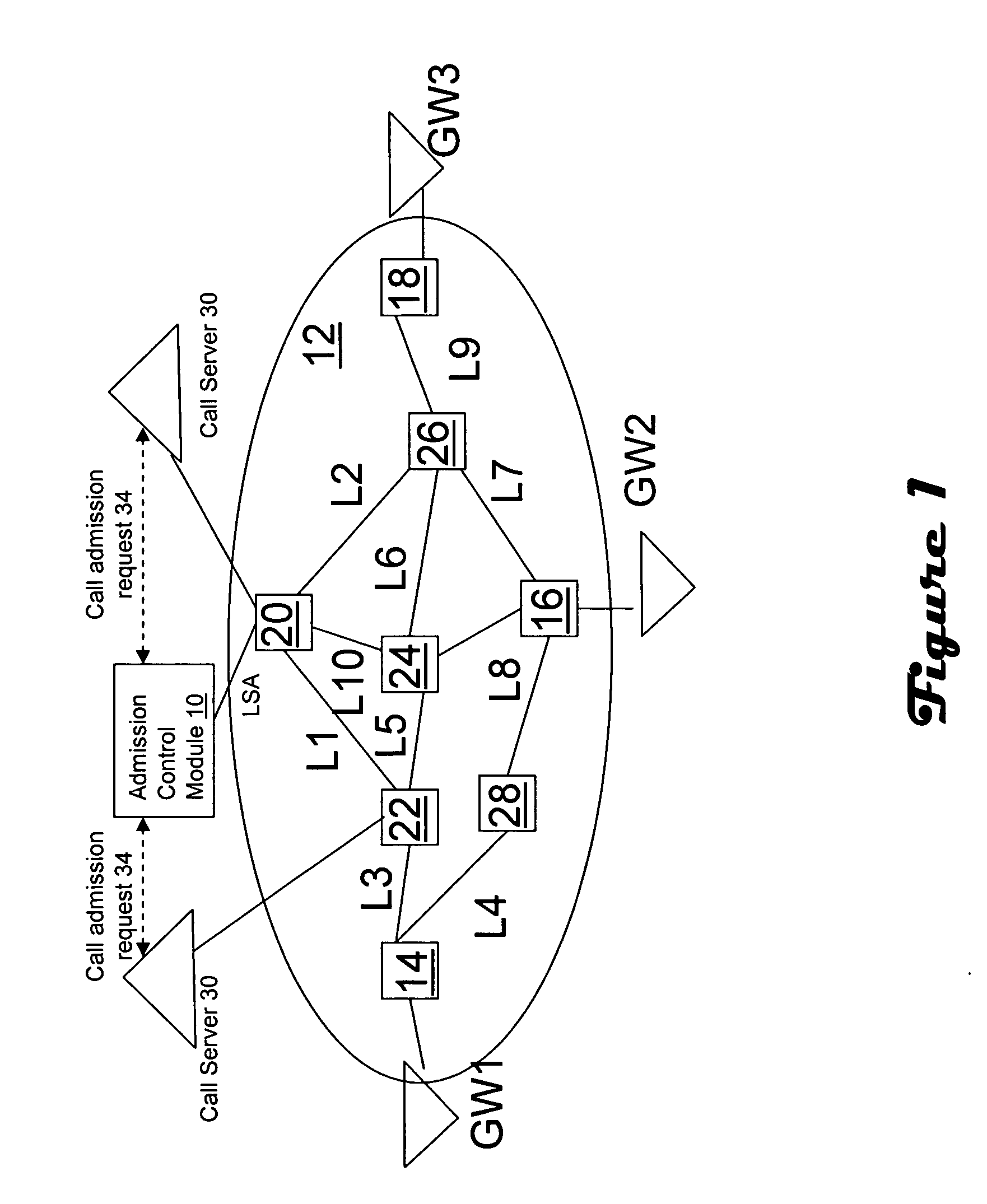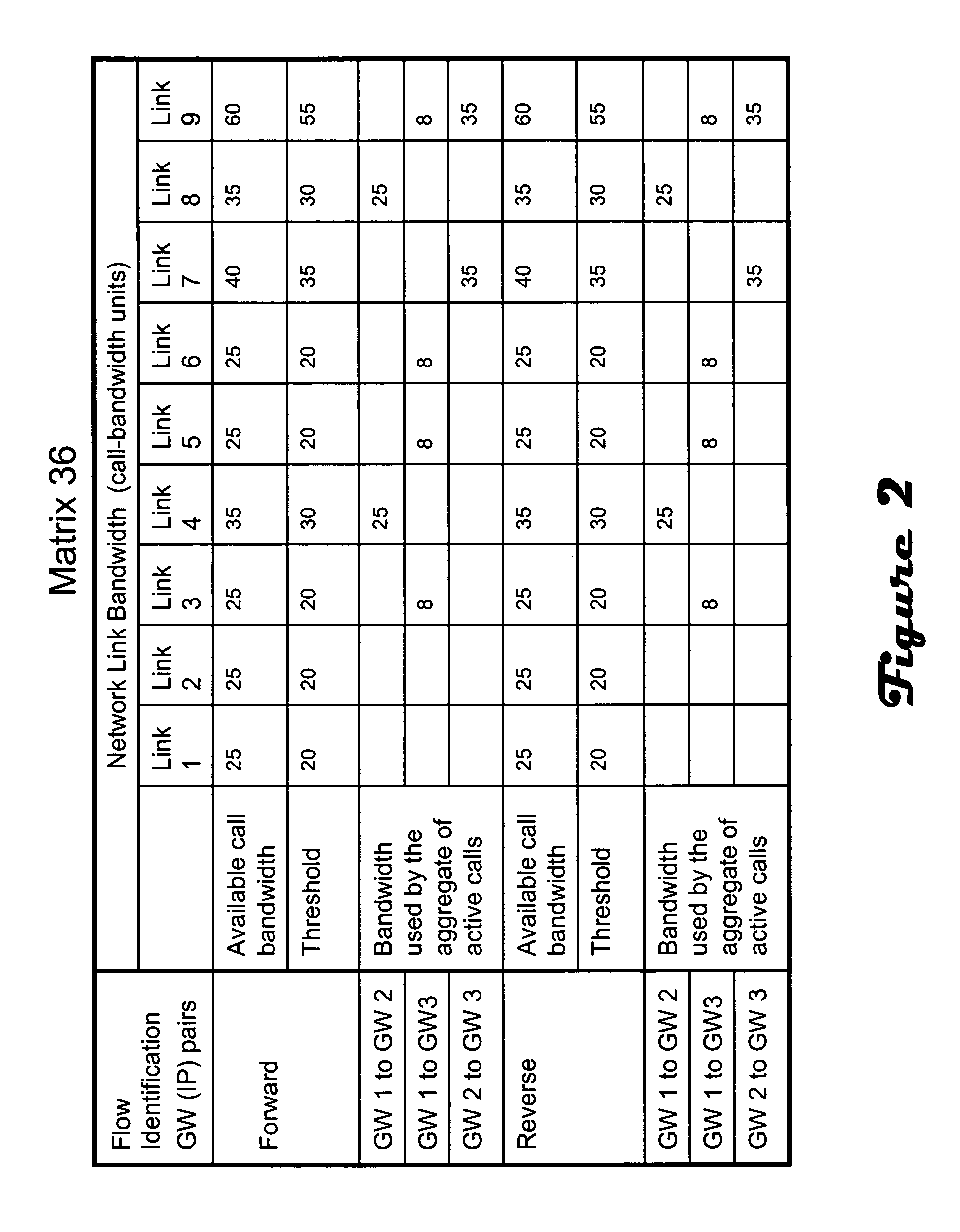Flow admission control in an IP network
- Summary
- Abstract
- Description
- Claims
- Application Information
AI Technical Summary
Benefits of technology
Problems solved by technology
Method used
Image
Examples
Embodiment Construction
[0014]FIG. 1 illustrates operation of a flow admission control module 10 in conjunction with an IP network 12. The network includes a plurality of nodes, such as edge nodes 14, 16, 18 and core nodes 20, 22, 24, 26, 28, some of which are interconnected via links L1, L2, L3, L4, L5, L6, L7, L8, L9, L10. Public switched telephony network (PSTN) subscribers (i.e. telephony callers) are connected to edge nodes via telephony to IP gateways GW1, GW2, GW3. One or multiple call servers 30 are employed to manage IP telephony calls carried by the network 12. The call server 30 interacts with the flow admission control module 10 to perform admission control. It should be noted that while the invention is being described with regard to support of voice calls, the admission control module could also be utilized in conjunction with other call flows benefiting from admission control such as video and bandwidth-sensitive data as already mentioned.
[0015] The admission control module 10 monitors and ...
PUM
 Login to View More
Login to View More Abstract
Description
Claims
Application Information
 Login to View More
Login to View More - R&D
- Intellectual Property
- Life Sciences
- Materials
- Tech Scout
- Unparalleled Data Quality
- Higher Quality Content
- 60% Fewer Hallucinations
Browse by: Latest US Patents, China's latest patents, Technical Efficacy Thesaurus, Application Domain, Technology Topic, Popular Technical Reports.
© 2025 PatSnap. All rights reserved.Legal|Privacy policy|Modern Slavery Act Transparency Statement|Sitemap|About US| Contact US: help@patsnap.com



